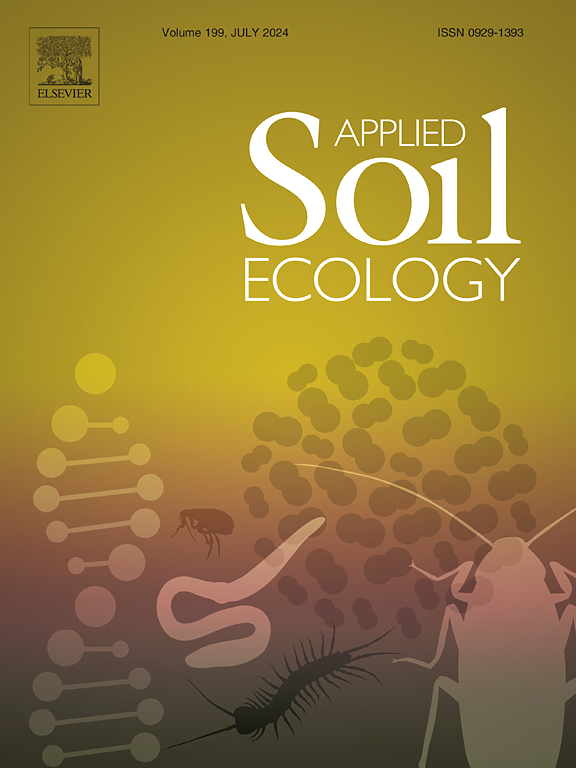Sustaining vulnerable agroecosystems with compost: Lasting benefits to soil health and carbon storage in semiarid winter wheat (Triticum aestivum, L.)
IF 4.8
2区 农林科学
Q1 SOIL SCIENCE
引用次数: 0
Abstract
Wheat agroecosystems provide one of the most important crops worldwide yet are often threatened by land degradation and climate change, making it vital to find practices that sustain soil health. Organic amendments can regenerate degraded soils, provide plant-available nutrients, and sequester carbon (C), and have long-lasting impacts in semiarid regions. This project evaluated the legacy of compost (0–50 Mg ha−1) in an organic winter wheat-fallow rotation by comparing soil health and plant growth either 1–2 or 5–6 years after compost application, with or without cover crops. We assessed soil chemistry, structure, labile organic matter pools, microbial activity (by extracellular enzymes), and microbial community composition (by phospholipid fatty acids). We aimed to understand how compost application and cover cropping contribute to long-term soil health and C storage in semiarid regions, and how these practices impact soil microbiology. Compost resulted in sustained increases in organic matter pools, but only marginally benefitted plant growth and soil structure. Compost did not impact microbial community composition or activity, possibly because cold and dry conditions inhibited microbial functioning and compost decomposition. Cover crops did not impact soil organic matter or microbiology. Overall, we found that compost can contribute to long-term soil C storage in semiarid degraded soils such as these, despite having no measurable impacts on soil microbial biomass or activity.
用堆肥维持脆弱的农业生态系统:对半干旱地区冬小麦土壤健康和碳储存的持久益处
小麦农业生态系统是全球最重要的农作物之一,但却经常受到土地退化和气候变化的威胁,因此,找到能够维持土壤健康的方法至关重要。有机改良剂可以使退化的土壤再生,提供植物可利用的养分,并固碳(C),在半干旱地区产生持久的影响。本项目通过比较施用堆肥 1-2 年或 5-6 年后的土壤健康状况和植物生长情况,评估了堆肥(0-50 兆克/公顷-1)在有机冬小麦-荒地轮作中的应用效果。我们评估了土壤化学、结构、可变有机物库、微生物活性(通过胞外酶)和微生物群落组成(通过磷脂脂肪酸)。我们旨在了解堆肥施用和覆盖种植如何促进半干旱地区的长期土壤健康和碳储存,以及这些做法如何影响土壤微生物学。堆肥使有机质库持续增加,但对植物生长和土壤结构的益处不大。堆肥没有影响微生物群落的组成或活动,这可能是因为寒冷干燥的条件抑制了微生物的功能和堆肥的分解。覆盖作物对土壤有机质或微生物没有影响。总之,我们发现堆肥可以促进半干旱退化土壤中碳的长期储存,尽管它对土壤微生物的生物量或活性没有明显的影响。
本文章由计算机程序翻译,如有差异,请以英文原文为准。
求助全文
约1分钟内获得全文
求助全文
来源期刊

Applied Soil Ecology
农林科学-土壤科学
CiteScore
9.70
自引率
4.20%
发文量
363
审稿时长
5.3 months
期刊介绍:
Applied Soil Ecology addresses the role of soil organisms and their interactions in relation to: sustainability and productivity, nutrient cycling and other soil processes, the maintenance of soil functions, the impact of human activities on soil ecosystems and bio(techno)logical control of soil-inhabiting pests, diseases and weeds.
 求助内容:
求助内容: 应助结果提醒方式:
应助结果提醒方式:


